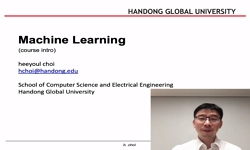본 연구는 자동차의 전기·전자 부품 및 장치(전장부품)에 대한 적정한 품목분류 기준을 제시하고자 하였다. 본 연구는 머신러닝 모델 중 하나인 랜덤 포레스트(Random Forest)를 사용하여 한국 ...
http://chineseinput.net/에서 pinyin(병음)방식으로 중국어를 변환할 수 있습니다.
변환된 중국어를 복사하여 사용하시면 됩니다.
- 中文 을 입력하시려면 zhongwen을 입력하시고 space를누르시면됩니다.
- 北京 을 입력하시려면 beijing을 입력하시고 space를 누르시면 됩니다.

랜덤 포레스트를 통한 전장부품 품목분류 기준 연구 = A Study on the Classification Criteria for Automotive Electronics Using Random Forest
한글로보기https://www.riss.kr/link?id=A109590972
- 저자
- 발행기관
- 학술지명
- 권호사항
-
발행연도
2025
-
작성언어
Korean
-
주제어
전장부품 ; 품목분류 ; HS코드 ; 머신러닝 ; 랜덤 포레스트 ; Automotive Electronics ; Classification ; HS Code ; Machine Learning ; Random Forest
-
등재정보
KCI등재
-
자료형태
학술저널
-
수록면
31-52(22쪽)
- 제공처
-
0
상세조회 -
0
다운로드
부가정보
국문 초록 (Abstract)
본 연구는 타겟 변수와 독립변수를 결합한 6가지 모델을 구축하였다. 각 모델에 대하여 GridSearchCV를 통해 하이퍼파라미터를 최적화했으며, 모델의 성능을 정확도, 정밀도, 재현율, 과적합을 검토한 끝에 HS4-DRC와 HS2-DRC 모델을 선택하여 랜덤 포레스트 분석 결과를 제시하였다.
본 연구는 피처 중요도 분석을 통해 전장부품의 품목분류 예측에 기여한 요소들을 도출했다. 주요 피처로는 ‘측정’, ‘유량’, ‘검사’, ‘제어’, ‘회로’, ‘감지’, ‘온도’ , ‘기록’, ‘저항’ 등이 확인되었다. 피처 중요도 분석을 바탕으로 전장부품의 기능적 특성과 기술적 특성, 그리고 사용 목적 등을 중심으로 품목분류 기준을 제시하였다.
전장부품은 복잡한 특성을 가진 다양한 품목을 일관성 있고 적법하게 분류해야 하기에 품목분류에 어려움이 따른다. 본 연구는 랜덤 포레스트를 통한 품복분류 기준 도출 방안을 제안하며 품목분류가 무역장벽이 되지 않는 데 기여하고자 하였다.
본 연구는 자동차의 전기·전자 부품 및 장치(전장부품)에 대한 적정한 품목분류 기준을 제시하고자 하였다. 본 연구는 머신러닝 모델 중 하나인 랜덤 포레스트(Random Forest)를 사용하여 한국 관세청의 전장부품 품목분류 사례 데이터를 분석하였다. 관세청의 품목분류 사례에서 HS 코드 2단위(류)와 HS 코드 4단위(호)를 타겟변수로, 각 품목에 대한 설명(Description), 결정 사유(Reasoning), 결론(Conclusion)의 세 가지 요소를 독립변수로 사용하여 분류를 시도했다.
본 연구는 타겟 변수와 독립변수를 결합한 6가지 모델을 구축하였다. 각 모델에 대하여 GridSearchCV를 통해 하이퍼파라미터를 최적화했으며, 모델의 성능을 정확도, 정밀도, 재현율, 과적합을 검토한 끝에 HS4-DRC와 HS2-DRC 모델을 선택하여 랜덤 포레스트 분석 결과를 제시하였다.
본 연구는 피처 중요도 분석을 통해 전장부품의 품목분류 예측에 기여한 요소들을 도출했다. 주요 피처로는 ‘측정’, ‘유량’, ‘검사’, ‘제어’, ‘회로’, ‘감지’, ‘온도’ , ‘기록’, ‘저항’ 등이 확인되었다. 피처 중요도 분석을 바탕으로 전장부품의 기능적 특성과 기술적 특성, 그리고 사용 목적 등을 중심으로 품목분류 기준을 제시하였다.
전장부품은 복잡한 특성을 가진 다양한 품목을 일관성 있고 적법하게 분류해야 하기에 품목분류에 어려움이 따른다. 본 연구는 랜덤 포레스트를 통한 품복분류 기준 도출 방안을 제안하며 품목분류가 무역장벽이 되지 않는 데 기여하고자 하였다.
다국어 초록 (Multilingual Abstract)
Six models were constructed by combining different target and independent variables. The hyperparameters of each model were optimized using GridSearchCV, and their performance was evaluated based on accuracy, precision, recall, and overfitting. As a result, the HS4-DRC and HS2-DRC models were selected, and the Random Forest analysis results were presented.
This study conducted a feature importance analysis to identify the key factors contributing to the classification of automotive electronics. The major contributing features included ‘measurement’, ‘flow rate’, ‘inspection’, ‘control’, ‘circuit’, ‘detection’, ‘temperature’, ‘recording’, and ‘resistance’. Based on this analysis, classification criteria were proposed, focusing on the functional and technical characteristics of automotive electronics as well as their intended use.
Given the complexity and diversity of automotive electronics, consistent and legally compliant classification poses challenges. This study suggests a classification framework using Random Forest and aims to ensure that classification does not become a trade barrier.
This study aims to propose appropriate classification criteria for automotive electrical and electronic components (automotive electronics). Using Random Forest, a machine learning model, this study analyzed classification case data from the Korea Cus...
This study aims to propose appropriate classification criteria for automotive electrical and electronic components (automotive electronics). Using Random Forest, a machine learning model, this study analyzed classification case data from the Korea Customs Service. The HS code at the 2-digit (chapter) and 4-digit (heading) levels in this data were set as the target variables, while the description, reasoning, and conclusion of each classification case were used as the independent variables.
Six models were constructed by combining different target and independent variables. The hyperparameters of each model were optimized using GridSearchCV, and their performance was evaluated based on accuracy, precision, recall, and overfitting. As a result, the HS4-DRC and HS2-DRC models were selected, and the Random Forest analysis results were presented.
This study conducted a feature importance analysis to identify the key factors contributing to the classification of automotive electronics. The major contributing features included ‘measurement’, ‘flow rate’, ‘inspection’, ‘control’, ‘circuit’, ‘detection’, ‘temperature’, ‘recording’, and ‘resistance’. Based on this analysis, classification criteria were proposed, focusing on the functional and technical characteristics of automotive electronics as well as their intended use.
Given the complexity and diversity of automotive electronics, consistent and legally compliant classification poses challenges. This study suggests a classification framework using Random Forest and aims to ensure that classification does not become a trade barrier.
동일학술지(권/호) 다른 논문
-
- 중앙대학교 한국디지털무역연구소
- 김채영
- 2025
- KCI등재
-
수출입기업의 환위험 관리를 위한 환율 예측에 관한 연구
- 중앙대학교 한국디지털무역연구소
- 박철호
- 2025
- KCI등재
-
버추얼 인플루언서의 특성인식이 인스타그램 팔로워 반응에 미치는 영향: 콘텐츠 유용성의 조절효과를 중심으로
- 중앙대학교 한국디지털무역연구소
- 이지혜
- 2025
- KCI등재




 KCI
KCI 스콜라
스콜라






